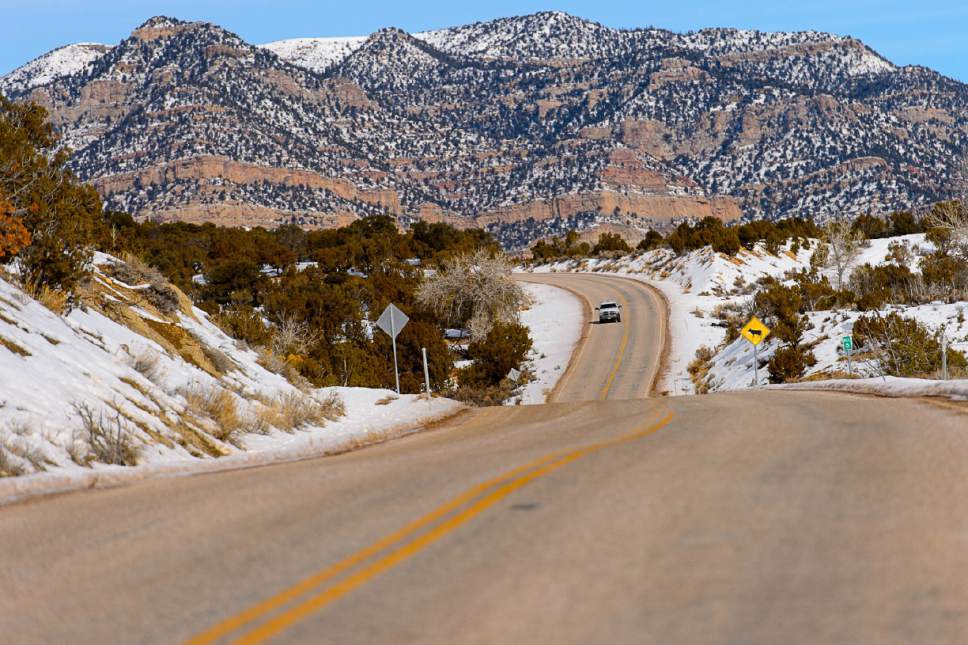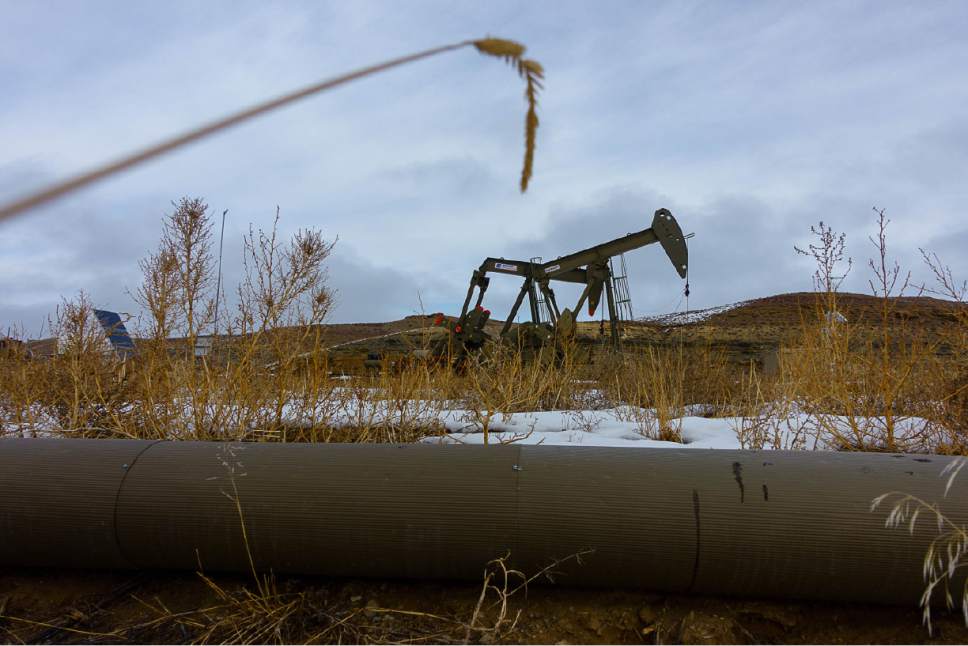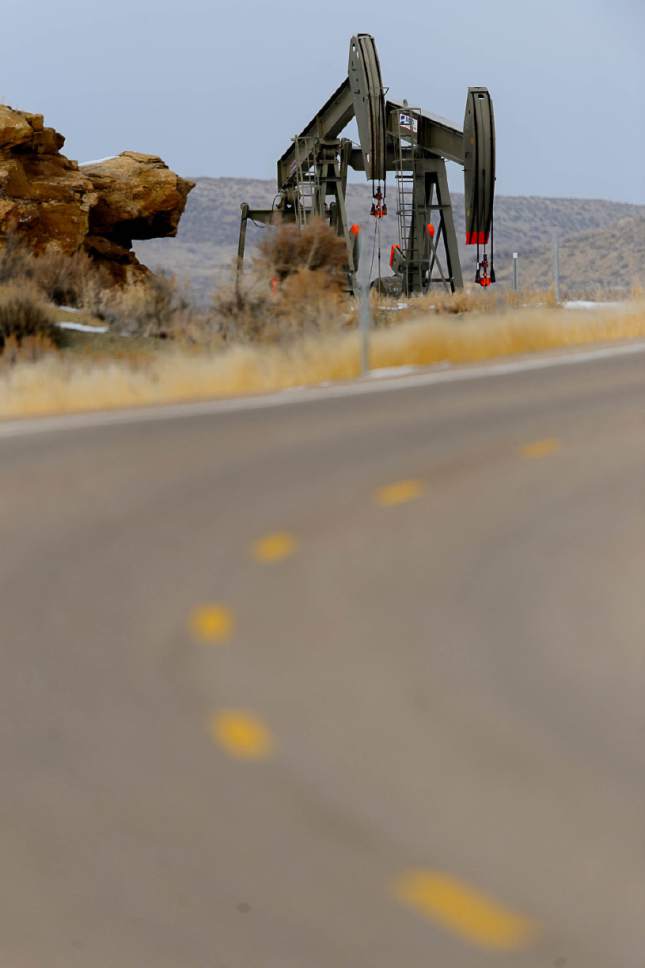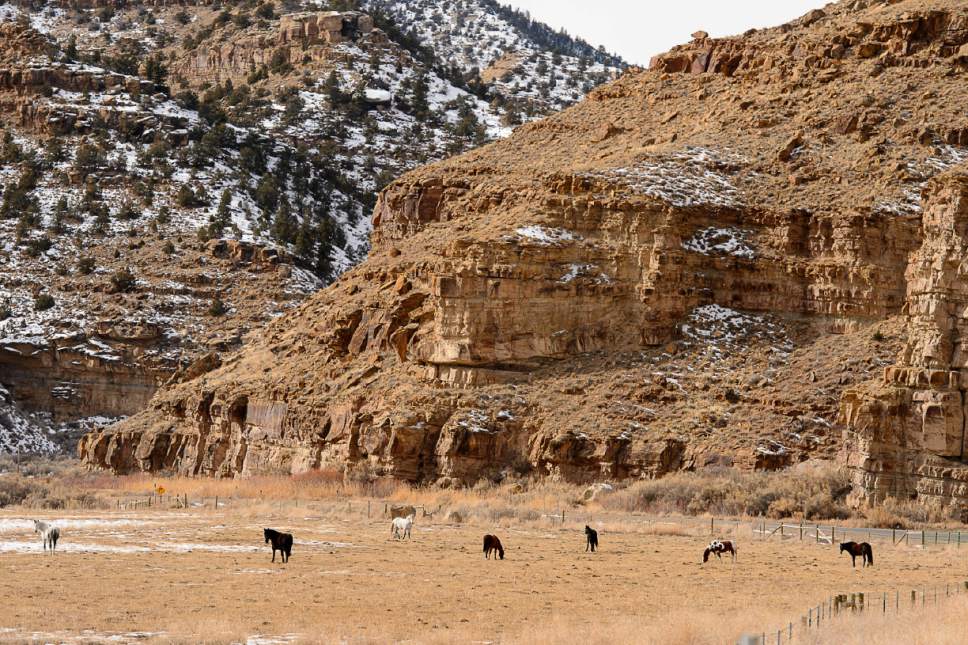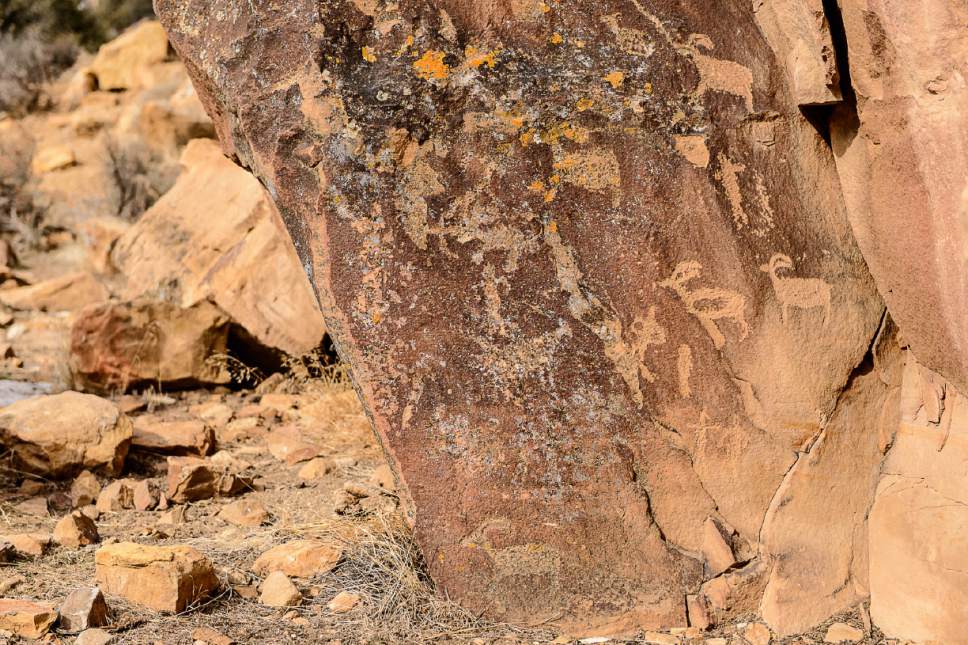This is an archived article that was published on sltrib.com in 2016, and information in the article may be outdated. It is provided only for personal research purposes and may not be reprinted.
The Bureau of Land Management's latest offerings for oil and gas leases include parcels in Nine Mile Canyon, spurring protests from several groups that say inviting yet more development there conflicts with proper stewardship of the ancient rock art that abounds along the canyon walls.
The federal agency was also lambasted from the opposite direction by state officials who say the BLM is not offering enough parcels for lease in defiance of its multiple-use mission and its own area management plans.
On Dec. 13, Utah BLM officials will accept online bids for 28 parcels covering 12,224 acres in the BLM's Green River District, managed by the Price and Vernal field offices. Two of the parcels, totaling 1,550 acres, are in Nine Mile, the archaeological district east of Wellington that is much longer than its name might suggest. It's been dubbed "the world's longest art gallery" because of the profusion of petroglyphs left by Fremont Indians centuries ago, but it also overlies rich deposits of natural gas.
Several historic preservation and conservation groups joined forces to challenge these proposed leases, as well as four others near Desolation Canyon, a region proposed for wilderness.
"The BLM committed to having recreation and interpretation plans for Nine Mile Canyon — a place of incomparable cultural significance — in place by 2012 as mitigation for gas development on the adjacent [West] Tavaputs Plateau," said Dennis Willis, a retired BLM staffer who now works with the Nine Mile Canyon Coalition in Price. "Those commitments remain unmet and now the BLM wants to make leasing commitments that may preclude those planned actions. This doesn't make any sense and we call on BLM to defer offering any new leases in the Nine Mile Canyon region until it meets its outstanding obligations."
Added Jerry Spangler of the Colorado Plateau Archaeological Alliance: "The BLM has targeted the very heart of this cultural landscape characterized by hundreds of rock art sites, residences and granaries. It is unfathomable the BLM would sacrifice our collective past on the altar of oil and gas development."
BLM officials noted they deferred leasing decisions on dozens of other parcels industry wanted. An ongoing environmental review, which could pull even more parcels from the auction list, concluded the Nine Mile parcels can be developed without harming their cultural resources.
"All remaining parcels have rigorous resource protections, including many in the Nine Mile Canyon with no-surface-occupancy stipulations," said Kent Hoffman, deputy state director over lands and minerals.
But the Hopi Tribe does not believe those stipulations are enough to protect archaeological resources, which have yet to be adequately inventoried. In its comments on the proposed leases, the tribe insisted the two parcels in the canyon be withdrawn from the sale, along with three others near the canyon.
Hoffman noted the proposed lease sales don't authorize actual development.
Additional site-specific environmental reviews will have to be conducted, he said, before any potential surface-disturbing activities can begin. And the agency deferred some parcels for further review.
"We have a responsibility to get it right," Hoffman said.
Of the 122 parcels in the hydrocarbon-rich Green River District nominated by industry, the BLM declined to review 20 that were ineligible for leasing. After an environmental assessment, the agency refrained from offering another 74 because they overlapped with habitat associated with sage-grouse, black-footed ferret, and sensitive cactus species, and lands with wilderness characteristics that have yet to be fully inventoried.
State officials are dismayed that the BLM isn't offering more parcels in the Green River District. Land managers declined to lease parcels even though their acreage was open for leasing under the resource management plans for these areas, according to comments submitted by Utah's public lands director, Kathleen Clarke, who accused the agency of abusing its deferment policies.
"Most if not all of the deferred parcels could be part of the lease sale if BLM applied standard best-management practices and newly developed sage-grouse stipulations," Clarke wrote. "The BLM's failure to include 79 nominated parcels in the upcoming lease sale leads to a checkerboard approach to production rather than allowing for consolidation of operations. ... This approach leads to unnecessary costs, increased emissions and a hodgepodge of land use."
But blanket leases could also lead to blanket industrialization of entire landscapes, environmentalists warn. Undeveloped federal leases and approved drilling permits abound in the Uinta Basin, so industry has plenty to develop without committing more public lands to extractive uses.
Clarke's comments went on to blast the BLM for citing the state's wildlife concerns on some nominated parcels to justify withholding them from sale. She pledged to stop providing such recommendations to the BLM if they are used to "further stonewall oil and gas leasing."
The Dec. 13 sale coincides with the debut of the BLM's online system (www.energynet.com">http://www.energynet.com) for lease auctions, a change that critics allege is designed to deter activists from protesting or disrupting Utah's quarterly sales. The sales are normally conducted at the BLM's Salt Lake City headquarters, where bidders come in person, but have recently been held at larger rented venues to accommodate the growing interest. Some environmentalists argue the BLM should stop leasing publicly owned fossil fuel resources because burning oil, gas and coal releases emissions blamed for climate change.
But the switch is geared toward efficiency and cost saving, not thwarting public involvement, according BLM spokesman Ryan Sutherland.
"The move to online auctions has been a long-term project of the BLM, predating the recent public interest in the national lease sales, as well as the public interest which directly impacted the Bureau of Land Management Utah State office last year," he said. "Interested citizens can view the auction online as added transparency."
Brian Maffly covers public lands for The Salt Lake Tribune. Brian Maffly can be reached at bmaffly@sltrib.com or 801-257-8713. Twitter: @brianmaffly


